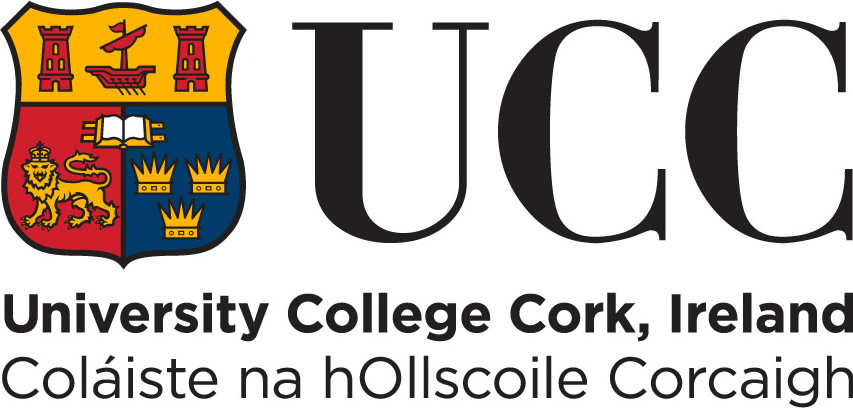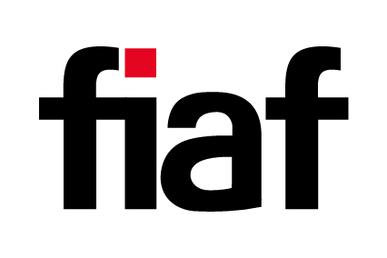Live Cinema: Cultures, Economies, Aesthetics, edited by Sarah Atkinson and Helen W. Kennedy. Bloomsbury Academic, 2018, 314 pp.
Malgorzata Bugaj
In recent years, the landscape of film exhibition has been constantly and rapidly evolving, reaching a point which Robert C. Allen calls the “post-moviegoing age”. Michael Gubbins notes an interesting paradox:
one of the clearest benefits deriving from the vast increase in access due to digital change has been, paradoxically, that it has driven audiences to seek out those events and occasions which seem to offer a unique or authentic experience. (79)
Live Cinema: Cultures, Economies, Aesthetics,edited by Sarah Atkinson and Helen W. Kennedy, addresses these shifts in viewing practices by applying Joseph Pine and James Gilmour’s notion of “experience economy” to the area of cinema studies. As Atkinson and Kennedy explain, the titular term “live cinema” is borrowed from an immersive screening of Back to the Future (Robert Zemeckis, 1985) organised by Secret Cinema which was marketed as a “Live Cinema Experience”, where the concept of “live” indicates that “something was happening in tandem with or around the screening space" (x). This aspect of film culture captures a range of creative practices turning a film screening into a unique, multimodal and/or multisensory event by adding elements which were not present in the film’s original cinema run (e.g. repurposing cinematic props, characters, music or stories in interactive performances). The increasingly popular notion of the “film screening plus one” frequently breaks the confines of the traditional film auditorium and involves the active participation of the audience.
Live Cinema: Cultures, Economies, Aesthetics opens with three texts acting as an extended introduction. In the Preface, Atkinson and Kennedy describe the trajectory that led to the publication of the volume: from their project on the intersection of film and video games in the Secret Cinema design strategies, through the publication of a special issue of Participations journal in 2016, the launch of the Live Cinema Network and the organisation of the Live Cinema Conference (2016, London), amongst other activities. In the Foreword Barbara Klinger—the author of the ground-breaking 2006 study Beyond the Multiplex focused on noncinematic sites of film consumption—sees the categories of live and mechanically reproduced media as fluid and overlapping rather than binary. Klinger argues that the live dimension has always been an essential part of cinema as a medium. Her essay is followed by “Live Cinema Presents… Cultures, Economies, Aesthetics” in which Atkinson and Kennedy point to repeated patterns in the organisational models of live cinema dating back to early film screenings and discuss hybrid aesthetics of this form of film consumption merging different media and arts. The introductory part is followed by a curated collection of broad-ranging takes on the subject organised into four thematic sections: “Spaces”, “Temporalities”, “Audiences” and “Creative and Artistic Practices”.
The relocation of the screen away from the cinema auditorium is crucial in defining live cinema. The first part of the book is devoted to alternative projection spaces and pop-up cinemas, particularly open-air screenings in which the site of the experience is more important than the film text itself. The principal topics of the four chapters comprising this section are the regeneration and community-building strategies brought about by the repurposing of noncinematic outdoors settings for film exhibition. Linda Levitt’s “Nostalgia and Placemaking at Los Angeles’ Outdoor Movies” focuses on three case studies: projections by Cinespia with film-related events taking place at the Hollywood Forever Cemetery; Street Food Cinema’s introduction of a “foodie” dimension with the food trucks that accompany their screenings; and Eat|See|Hear which has reinvigorated interest in notable destinations across Los Angeles through its pop-up cinematic events. Levitt understands the shared experience of film viewing as a social event which transforms a space into a meaningful place creating both cultural and personal memories. Emma Pett turns to live cinema in rural settings, specifically Picnic Cinema in Cumbria and Cine North’s immersive production for the BFI Love season staged in towns and villages across Yorkshire. Pett points to how these practices intersect with the notions of resourcefulness, co-operation and anticommercial sentiment generally associated with a rural existence, emphasising an affordable, communal experience. Pett also notes that live cinema events beyond urban contexts are still under-researched. In the third chapter, Lavinia Brydon and Olu Jenzen report on “The People’s Pier”, a research project focusing on two seaside piers. Establishing a strong historical link between the film viewing practices and Victorian piers, the essay offers a valuable insight into the repurposing of these spaces for the benefit of the community; examples include immersive screenings placing the film at the backdrop of sea-facing vistas. The first section concludes with Ella Harris’s “Encountering Urban Space Live at The Floating Cinema”, a case study of the titular pop-up cinema operating on a purpose-built canal boat travelling along the waterways between London and Bristol. The Floating Cinema tailors its film screenings to specific locations supplementing them with sound workshops, walks and artists talks responding to the film. Harris suggests that the “live” in live cinema could represent “a ‘bringing to life’ of cinematic ways of seeing, a transference of particular kind of cinematic viewing practices onto the everyday, urban world” and the transformation of urban space through this cinematic interpretation (61).
Live cinema events are often parts of film festivals which take place over a limited period of time, bearing a sense of ephemerality and uniqueness. Such “festivalised” (83) momentary departures from the conventions of cinematic experience are the theme of the second section titled “Temporalities” which explores the shifts in film audience experience and behaviour at film festival screenings beyond the traditional auditorium. The authors of the three contributions comprising this part take an ethnographic approach to film festivals as immersed insiders. Lesley-Ann Dickson explores creative and innovative content at Glasgow Film Festival (GFF). Dickson’s research stresses the experiential value of programming strategies, especially GFF’s augmented approach to film and space and the production of “the eventized film experience in the context of festivity” (84). Staying within the same geographical area, Maria A. Velez-Serna considers four Glasgow-based festivals during the 2015–2016 season: GFF, South Side Film Festival, Radical Film Network Festival, and Radiance and Restless Natives. Velez-Serna adopts a fresh methodological approach merging cinema and tourism studies by comparing film festivals attendees to tourists: both groups have a sense of an appointment, emphasise the importance of a location and frequently use maps. The essay which closes this section, “Never Seen a Short Like That Before! Playfulness and Participatory Audiences in San Sebastian Horror and Fantasy Film Festival”, analyses the case of the titular festival in the years 2012–2015 as a celebration of cult fandom. Here Rosana Vivar probes this film subculture through the festival attendees, drawing attention to their enthusiastic and often subversive engagement with the screenings.
The section “Audiences” interrogates the participatory aspect of live cinema predicated on an active audience central to animating alternative screening spaces. Given the rather transitory nature of these events, the main challenge here lies in analysing the fleeting experience of the spectators-participants. Opening this part, Joseph Attard compares the experience of the first-time opera goers who attended both a live opera event and its recorded version screened in a cinema. Set in a meticulously researched historical context, an operatic cinema event is here regarded as a form of live cinema which has developed into a distinct art form successfully reaching new opera audiences. Richard McCulloch and Virginia Crisp sample the tastes of the loyal clientele at Prince Charles Cinema in London, known for its alternative events and a strong emphasis on cinephilia. From their audience research, the authors conclude that “event-led participatory screenings seemed peculiarly at odds with the kind of cinemagoing experience that they considered the ‘correct’ one” (164). In the penultimate essay in this section, Helen W. Kennedy examines the audiences of 2.8 Hrs Later, a zombie street game which repurposes the city as a play space, and Secret Cinema’s 28 Days Later experience, an interactive event preceding the screening of the film. In these hybrid events, based around familiar cinematic tropes, using game-like rules and employing elements particular to theatre, the funfear factor is carefully managed. Meanwhile, Matthew Jones reports on the project “Cultural Memory and British Cinemagoing of the 1960s” which employed a live cinematic production as a nontraditional means of disseminating the research findings. However, rather than immersing the participants in the film diegesis, the event recreated the experience of the 1960s cinema audience. Accordingly, this type of creative intervention invokes Atkinson and Kennedy’s taxonomy of live cinema (i.e. enhanced, augmented and participatory types of events) to which Jones adds the category of “living cinema” focusing on the cinema-going itself (198).
The final section of the book moves to the production processes of live cinema. Each chapter looks at a particular form of these hybrid works, merging film and, respectively, music, immersive theatre, culinary arts and live broadcast. Contributions in this part come from researchers and artists reflecting on the challenges and opportunities of their creative practice. As the title suggests, “Pseudo Soundtracks: Reconsidering the Rescore” focuses on soundtrack design and specifically live scoring and rescoring. Charting the history of rescoring, Philip Brophy identifies its two strands: neutralising rescore and radicalising rescore. Brophy offers examples of imaginative rescores which “choose to imagine operations beyond visuals” (210) and details the creative process behind his own rescores for two pre-existing films: Philippe Garrel’s Le Révélateur (1968) and Andy Warhol’s Kiss (1963). Josephine Machon turns to the immersive theatre of Punchdrunk, who are often recognised as leading innovators of large-scale participatory productions. In their The Drowned Man: A Hollywood Fable (2013–2014) the audience is invited to a sensual exploration of a world filled with cinematic references. Similarly to Jones, Machon classifies this work as an example of a “living cinema” event and demonstrates how the forms and techniques particular to immersive theatre inspire screen-dominated practice and break down the “segregation of space (auditorium vs stage) and role (static-passive observer vs active-moving performer)” (221). Following Machon’s contribution, Brendon Wocke places the gastronomic experience of London-based Edible Cinema, specialising in synaesthetic “eat-a longs”, within a broader context of sensorial augmentation of the cinematic experience. By matching specific film moments with a carefully selected menu of snacks, Edible Cinema “offers a metaphorical interpretation of the visual action in gastronomic terms” (232) aimed at reinvigorating the audiovisual experience. Wocke proposes a study of this type of event through the lens of psychoanalysis. In the final chapter Sarah Atkinson reviews her practice-based inquiry piece Hangmen Rehanged (2016) which “uniquely fused a number of distinct and emergent creative practices and cultural forms—event cinema, live cinema, sensorial cinema and promenade theatre” (245). In the discussed work, the prerecorded 2015 stage play Hangmen written by Martin McDonagh was screened with the accompaniment of theatrical elements and creatively matched menu. Atkinson proposes a theoretical basis through which this innovative “site and screen responsive” production can be analysed and includes some insight into the differing expectations of the producers and the audience (256).
In her contribution to the book, Linda Levitt astutely situates inquiries into live cinema within what Maltby calls New Cinema History, an approach preoccupied with the “cinema as a commercial institution and the socio-cultural history of its audiences” (Maltby 9). According to Maltby, this perspective coexists alongside traditional film theory, but draws particular attention to both place and audience. Live Cinema: Cultures, Economies, Aesthetics successfully addresses a significant gap in knowledge that existed around the experience of immersive, participatory film screening in spaces outside cinema. Each chapter contains some valuable perspectives, but also poses a number of questions and opens new pathways for further research. The contributors explore the multivalent nature of live cinema, offering a range of theoretical and methodological approaches and highlighting the affiliation of these creative practices with early film, fan and cult media, games, theatre and performance, psychoanalysis, tourism studies and culinary arts, amongst others. Collectively, the essays comprising this anthology develop strong theoretical foundations for others to refine and expand, especially important given the fact that this dynamically evolving field regularly produces innovative and experimental works defying easy classifications. This timely publication succeeds in its bid to establish live cinema studies as an area of research in its own right as well as providing a source of valuable inspiration for practitioners and academics alike
References
1. Allen, Robert C. “Reimagining the History of Experience of Cinema in Post-Moviegoing Age.” Explorations in New Cinema History: Approaches and Case Studies, edited by Richard Maltby, Daniel Biltereyst, and Philippe Meers, Wiley-Blackwell, 2011, pp. 41–57, DOI: https://doi.org/10.1002/9781444396416.ch2.
2. Atkinson, Sarah, and Helen W. Kennedy. “Introduction – Inside-the-scenes: The Rise of Experiential Cinema.” Participations: Journal of Audience Reception Studies,vol. 13, no. 1, 2016, pp. 139–151.
3. Boyle, Danny, director. 28 Days Later. DNA Films, 2002.
4. The Drowned Man: A Hollywood Fable. Directed by Felix Barrett and Maxine Doyle, designed by Felix Barrett, Livi Vaughan and Beatrice Minns, choreography by Maxine Doyle, presented by Punchdrunk and the National Theatre, 20 July 2013–6 July 2014, Temple Studios, London. Garrel, Philippe, director. Le Révélateur. Zanzibar Films, 1968.
5. Gubbins, Michael. “Digital Revolution: Active Audiences and Fragmented Consumption.” Digital Disruption: Cinema Moves On-line,edited by Dina Iordanova and Stuart Cunningham, St Andrews Film Studies, 2012, pp. 67–100.
6. Hangmen Rehanged. Directed by Marie McCarthy, written by Sarah Weatherall, concept and commission by Sarah Atkinson and Helen W. Kennedy, performances by Jack Benjamin, Gavin Duff, Madeleine Hyland and Chris Yarnell, NT Live, Omnibus and Edible Cinema, 27 May 2016, King’s College, London.
7. Klinger, Barbara. Beyond the Multiplex: Cinema, New Technologies, and the Home. U of California P, 2008.
8. Maltby, Richard. “New Cinema Histories.” Explorations in New Cinema History: Approaches and Case Studies,edited by Richard Maltby, Daniel Biltereyst, and Philippe Meers, Wiley-Blackwell, 2011, pp. 3–40, DOI: https://doi.org/10.1002/9781444396416.ch1.
9. McDonagh, Martin. Hangmen. Faber & Faber, 2015.
10. Participations: Journal of Audience Reception Studies,vol. 13, no. 1, 2016.
11. Pine, B. Joseph, II, and James H. Gilmore. “Welcome to the Experience Economy.” Harvard Business Review, vol. 76, no. 4, 1998, pp. 97–105.
12. Warhol, Andy, director. Kiss. The Factory, 1963.
13. Zemeckis, Robert, director. Back to the Future. Amblin Entertainment, 1985.
Suggested Citation
Bugaj, Malgorzata. “Live Cinema: Cultures, Economies, Aesthetics, edited by Sarah Atkinson and Helen W. Kennedy.” Book Review. Alphaville: Journal of Film and Screen Media, no. 17, 2019, pp. 245–249. https://doi.org/10.33178/alpha.17.22.
Malgorzata Bugaj is currently based at the University of Edinburgh. She has taught courses on European cinema, Polish cinema, avant-garde film, cinema and the senses, and film theory. Her academic interests revolve around Eastern European film, live and avant-garde cinema, intermediality and the links between cinema and other arts as well as cinematic presentations of the body and senses. She is also a film curator and cofounder of Edinburgh pop-up cinema collective, KinoKlub.









